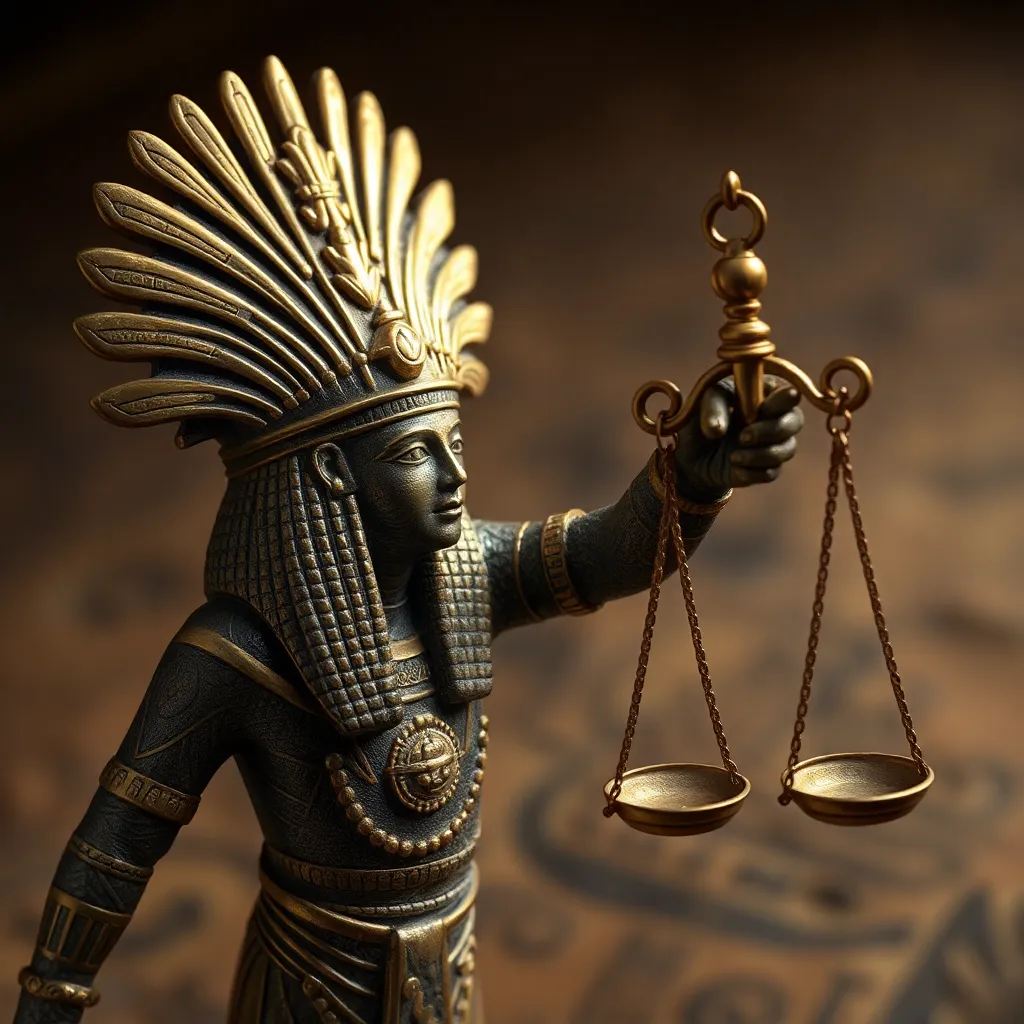The Use of Amulets in Egyptian Rituals for Justice
I. Introduction
Amulets held a significant place in ancient Egyptian culture, serving as powerful symbols of protection, health, and justice. These small objects, often inscribed with sacred texts or crafted into specific shapes, were believed to carry divine power and influence the lives of their bearers.
Justice was a cornerstone of Egyptian society, deeply woven into their legal system, moral principles, and spiritual beliefs. The Egyptians viewed justice not merely as a social construct but as a cosmic order that maintained balance within the universe.
This article aims to explore the profound connection between amulets and the pursuit of justice in ancient Egypt, examining their historical context, symbolism, and the rituals associated with their use.
II. Historical Context of Amulets in Ancient Egypt
The use of amulets in ancient Egypt dates back to the earliest periods of their civilization. These items played a vital role in daily life, serving as talismans that provided protection against harm and misfortune.
Throughout different dynasties, the significance and design of amulets evolved. In the Old Kingdom, for instance, amulets were primarily made of materials like faience, stone, and metal, while later periods saw the incorporation of glass and other materials.
- Common materials used in amulet creation include:
- Gold
- Silver
- Stone (e.g., lapis lazuli, turquoise)
- Faience
- Glass
III. Symbolism of Justice in Ancient Egyptian Beliefs
The concept of Ma’at was central to the Egyptian understanding of justice. Ma’at represented truth, balance, and order, and was personified by the goddess Ma’at, who played a crucial role in maintaining the cosmic balance.
Several deities were associated with justice, including:
- Ma’at: The goddess of truth and justice, often depicted with an ostrich feather, symbolizing truth.
- Thoth: The god of wisdom and writing, who was believed to record the judgments of the dead.
Justice was intrinsically linked to the afterlife, where the deceased would be judged by Osiris in a ceremony known as the “Weighing of the Heart.” Here, the heart of the deceased was weighed against the feather of Ma’at to determine their fate in the afterlife.
IV. Types of Amulets Used for Justice
Various amulets were specifically associated with justice, each carrying distinct meanings and purposes. Some of the most common amulets include:
- Scarab Amulet: Symbolizing transformation and protection, often used in funerary contexts.
- Feather of Ma’at: A representation of truth and justice, used to invoke fair judgment.
- Ankh: The symbol of life, representing the preservation of one’s soul and moral integrity.
Inscriptions on these amulets often invoked specific deities or recited spells intended to ensure justice and protection. Ritualistic practices involved the use of these amulets in legal and moral contexts, reinforcing the belief that divine intervention was necessary for fair outcomes.
V. Ritual Practices Involving Amulets
The activation of an amulet’s power often required specific rituals, which involved the careful invocation of deities and the recitation of sacred texts. Priests played an essential role in these rituals, acting as intermediaries between the divine and the mortal realm.
Typical rituals included:
- Purification ceremonies to cleanse the amulet.
- Chanting spells to invoke the protection of deities.
- Offering sacrifices to appease the gods.
Case studies of specific rituals reveal the methods employed to seek justice in both personal and communal disputes. For example, a ritual might be performed to ensure a fair trial or to seek vengeance against wrongdoers.
VI. Archaeological Findings and Historical Evidence
Numerous archaeological discoveries have illuminated the use of justice-related amulets in ancient Egypt. Excavations of tombs and temples have revealed a wealth of amulets, often found alongside burial goods, suggesting their importance in the afterlife.
Interpreting these findings provides insights into the rituals associated with justice. For instance, inscriptions found on amulets often reference the weighing of the heart and the role of Ma’at in ensuring cosmic balance.
Ancient texts, such as the “Book of the Dead,” also contain spells and guidelines for the use of amulets to navigate the challenges of the afterlife and achieve justice.
VII. Evolution of Justice Amulets Through the Ages
As Egyptian society evolved, so did the designs and meanings of justice amulets. The later periods saw changes influenced by foreign cultures, leading to the adoption of new materials and styles in amulet production.
The impact of foreign influences included:
- Incorporation of Hellenistic designs during the Greco-Roman period.
- New materials such as glass and pottery becoming prevalent.
Despite these changes, the core perception of justice remained, with amulets continuing to serve as vital tools in the pursuit of fairness and divine intervention.
VIII. Conclusion
In summary, amulets played a critical role in the ancient Egyptian pursuit of justice, serving not only as protective symbols but also as instruments of divine influence. Their significance in rituals and daily life highlights the deep interconnection between spirituality and morality in ancient Egyptian culture.
The legacy of these practices can still be seen today, as the concepts of justice and protection continue to resonate in modern spiritual beliefs. The intersection of spirituality and justice in ancient Egypt offers timeless lessons about the importance of truth, balance, and the pursuit of fairness in any society.




